12 Ways Red Pandas Are Unique (and Cute!)
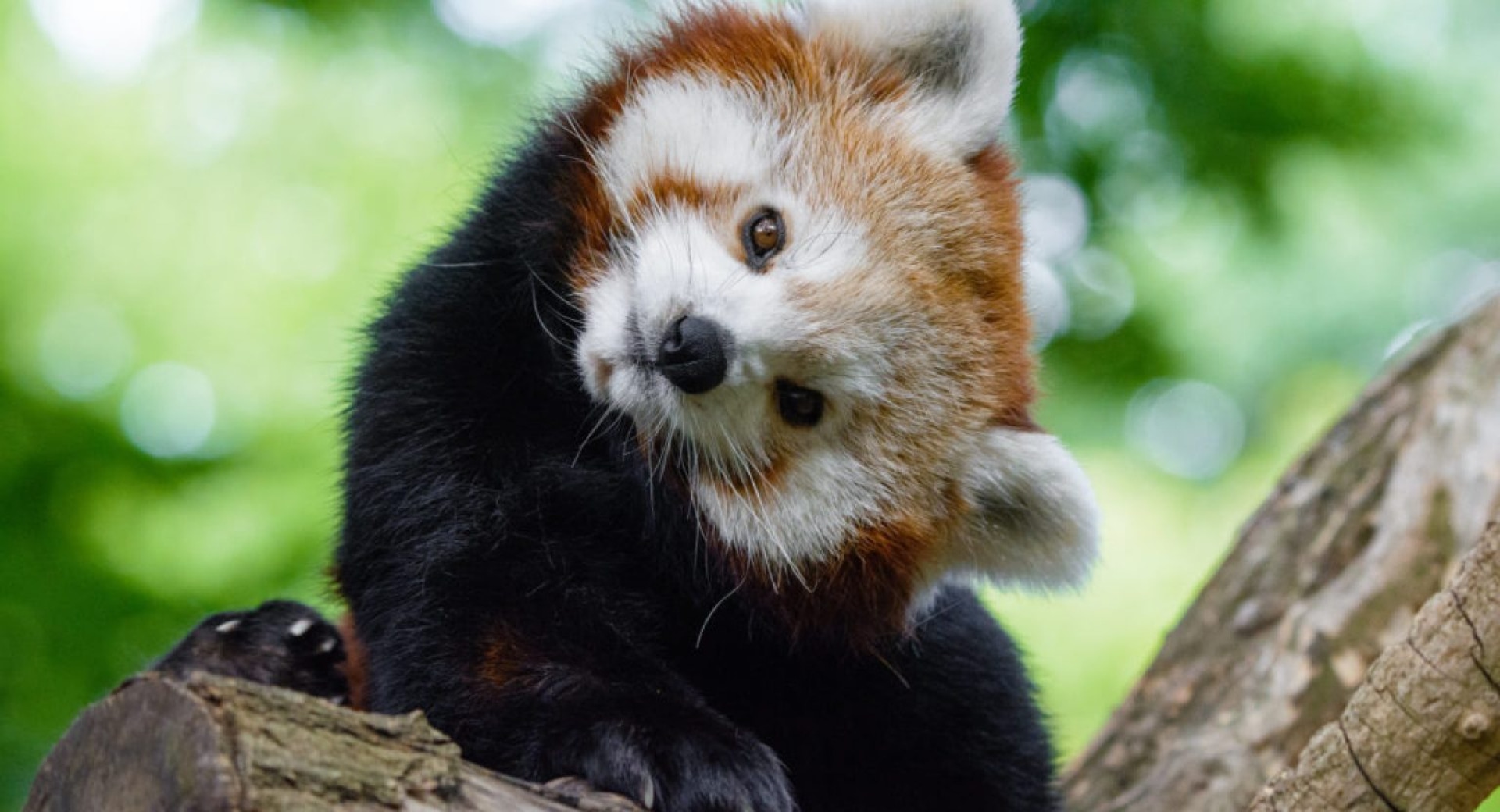
With International Red Panda Day 2020 only weeks away, it's time to appreciate what we love about this unique species!
1. Red pandas are the only living creatures in their family — Ailuridae. Their name might lead you to think that the red panda’s closest relative is the giant panda, but studies show that they are an ancient species in the order Carnivora, superfamily Musteloidea, which makes them probably most closely related to the group that includes weasels, raccoons, and skunks!
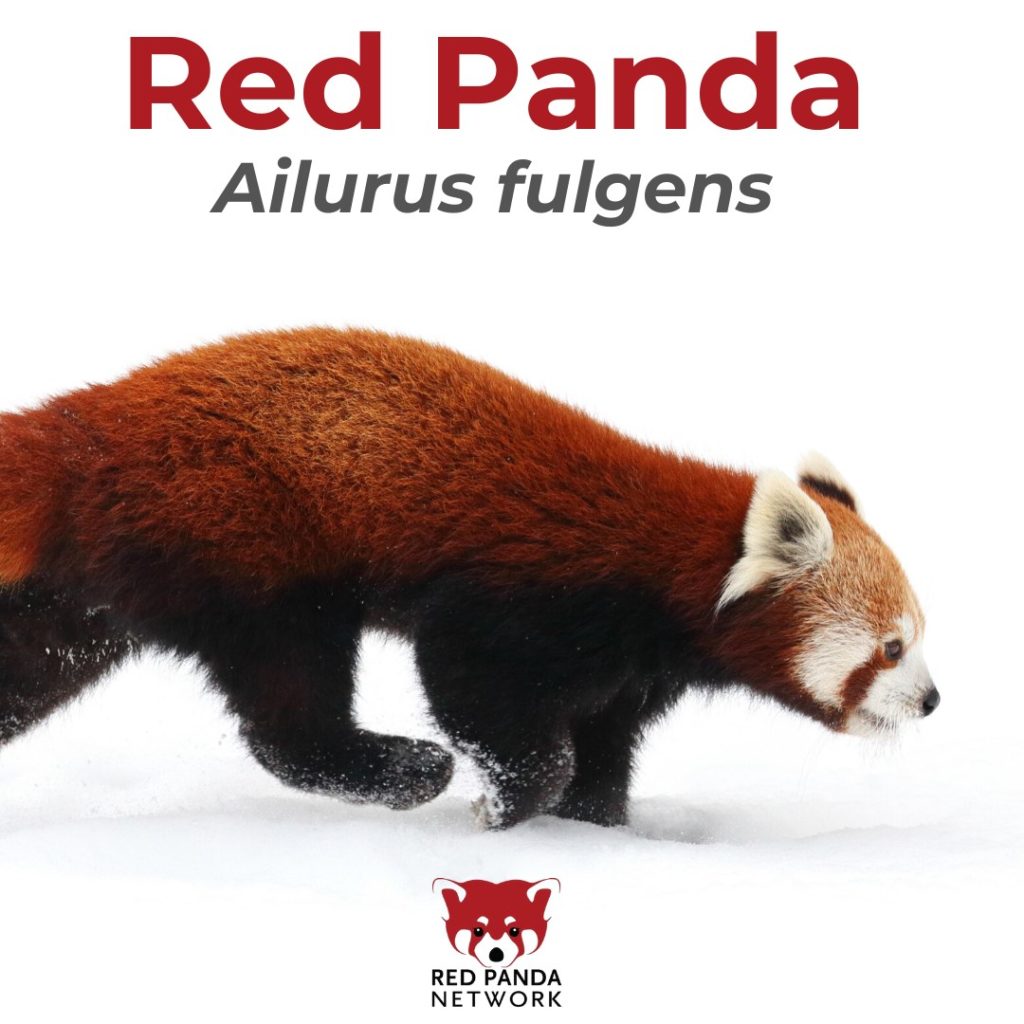
2. Red pandas are the result of what naturalists call convergent evolution: they're classified as carnivores, so their closest relatives are meat eaters, yet they live mainly on bamboo — about 95% of their diet! — which they only digest about 24 percent of the bamboo they eat.
This means red pandas need to eat 20 to 30 percent of their body weight each day and have been found to eat approximately 20,000 bamboo leaves in a single day! Roots, succulent grasses, fallen fruits, insects & grubs, the occasional bird and small mammal are also within the red panda's diet. Here's one munching on grapes!
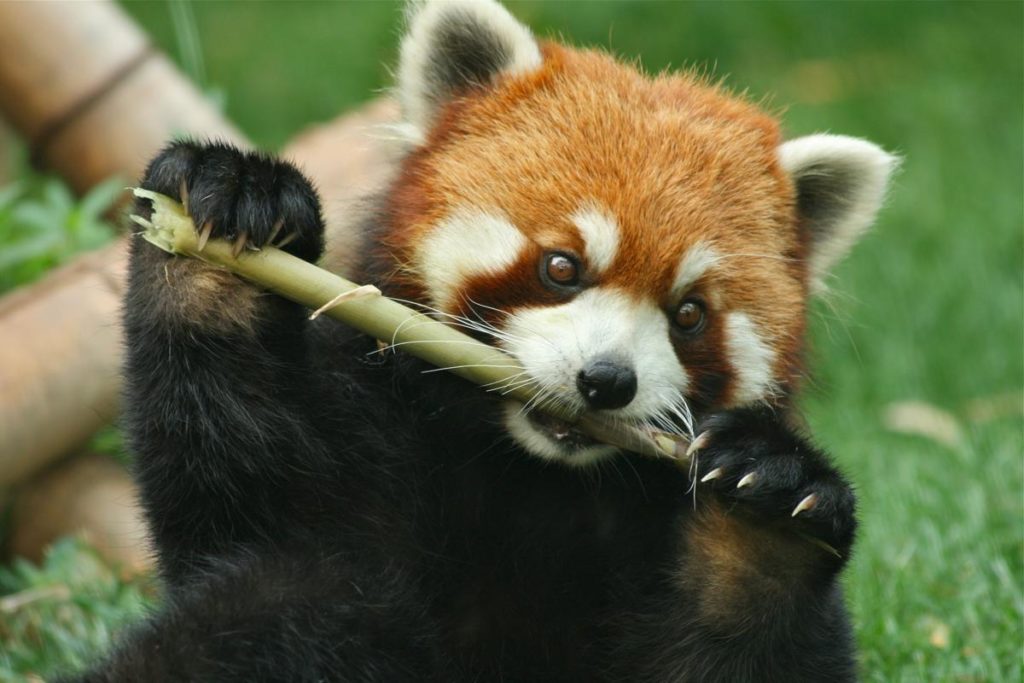
3. Red pandas are clearly cute but did you know their facial markings help them survive? The reddish 'tear tracks' extending from their eyes to the corner of their mouth may help keep the sun out of their eyes. The white on their face is "almost luminescent" and can guide a mother's lost cubs in the darkness!
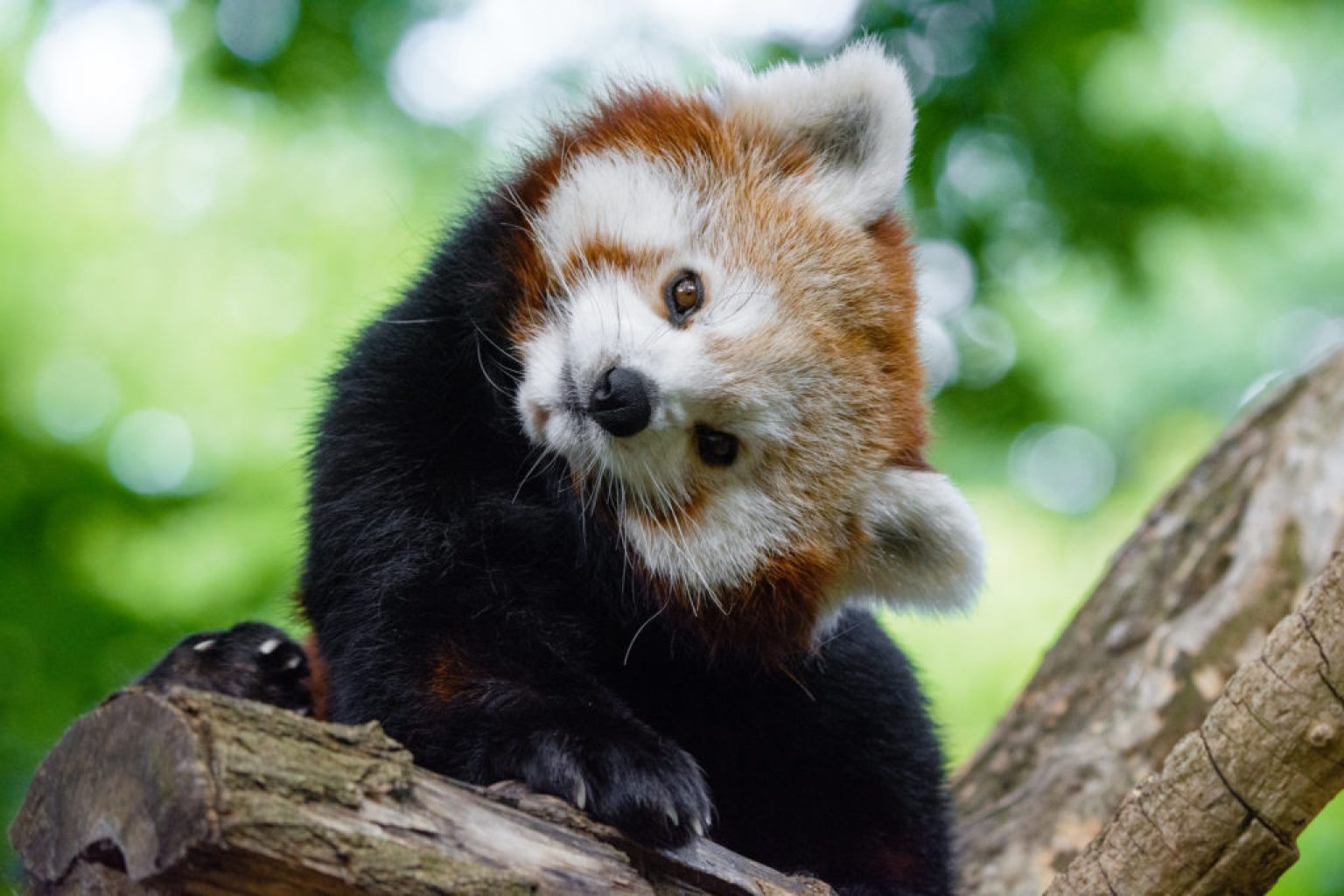
4. To say red pandas are a 'high altitude species' is putting it mildly. Red pandas live in temperate forests at elevations between 2,200 and 4,000 meters! How high is that? Well the Empire State Building is only 443 meters tall and Mile High Stadium in Denver, CO is at 1,609 meters! Essentially, red pandas follow the trees up the mountains and their habitat ends at the treeline.
Here, the summers are mild and wet, while the winters bring snow, so red pandas move lower during cold months. Though wintry weather isn't the ideal climate for them, it sure doesn't stop them from having a little fun with snow when they have the chance!
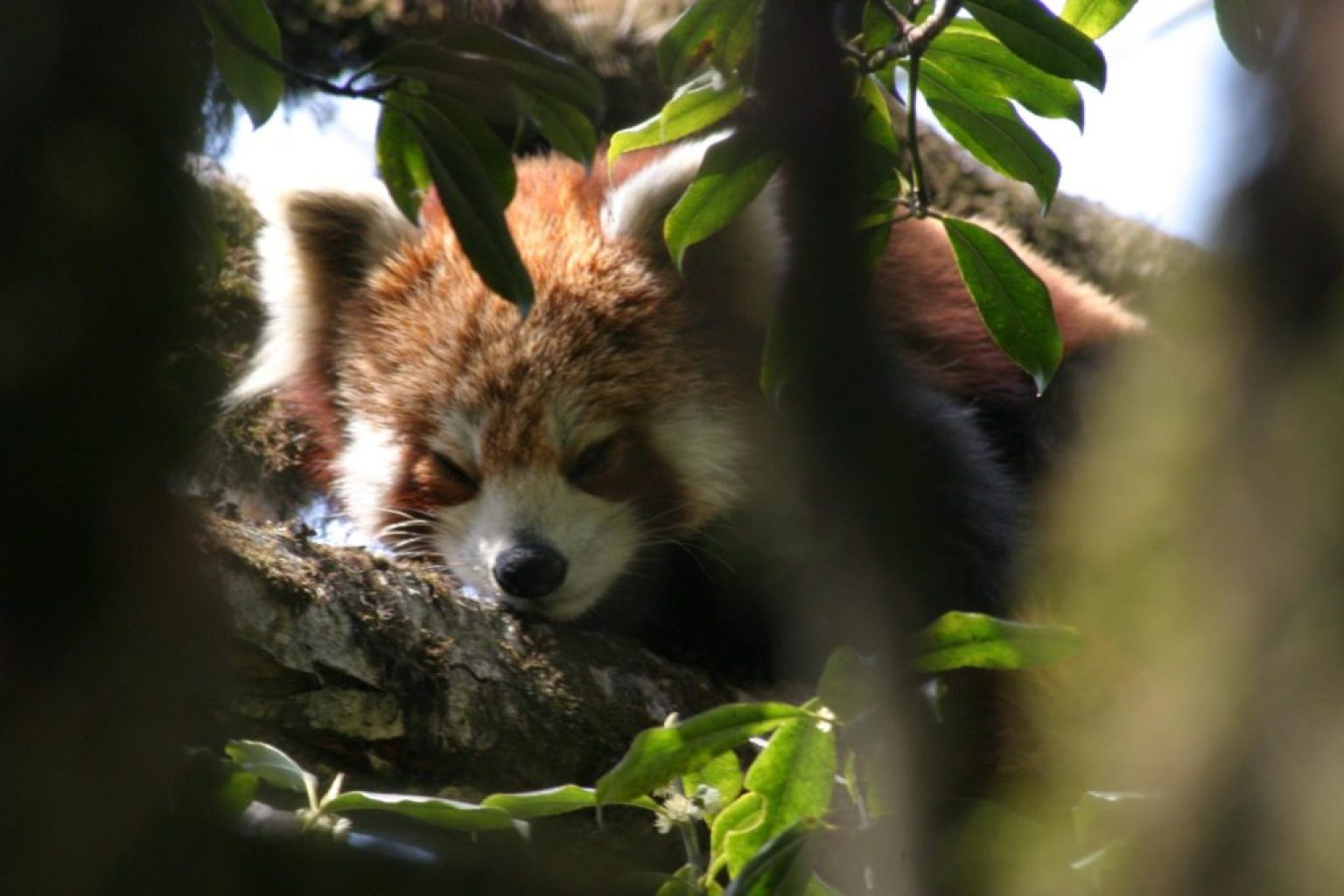
5. When it gets really cold red pandas can become dormant and go into what is called torpor (a state of decreased physiological activity in an animal). They wrap their tail around themselves and go into a deep sleep, reducing their metabolic demands and lowering both their core temperature and respiration rate. They will even use their large tails as a pillow!
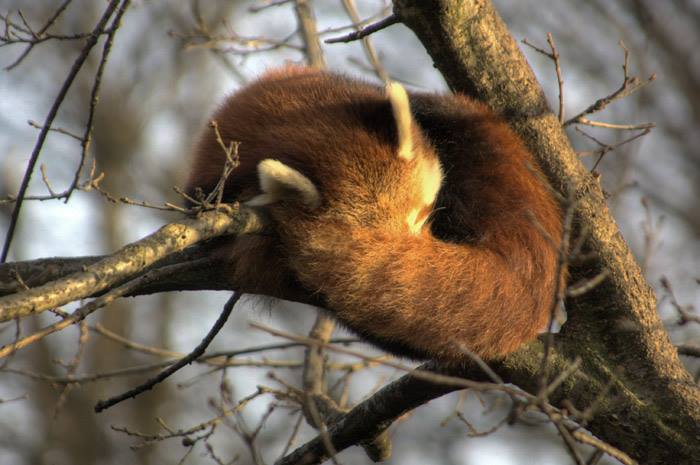
6. The fur on their feet is so thick they don't even leave a defined print! This fur helps keep their feet warm and prevents them from slipping on the wet and icy branches.
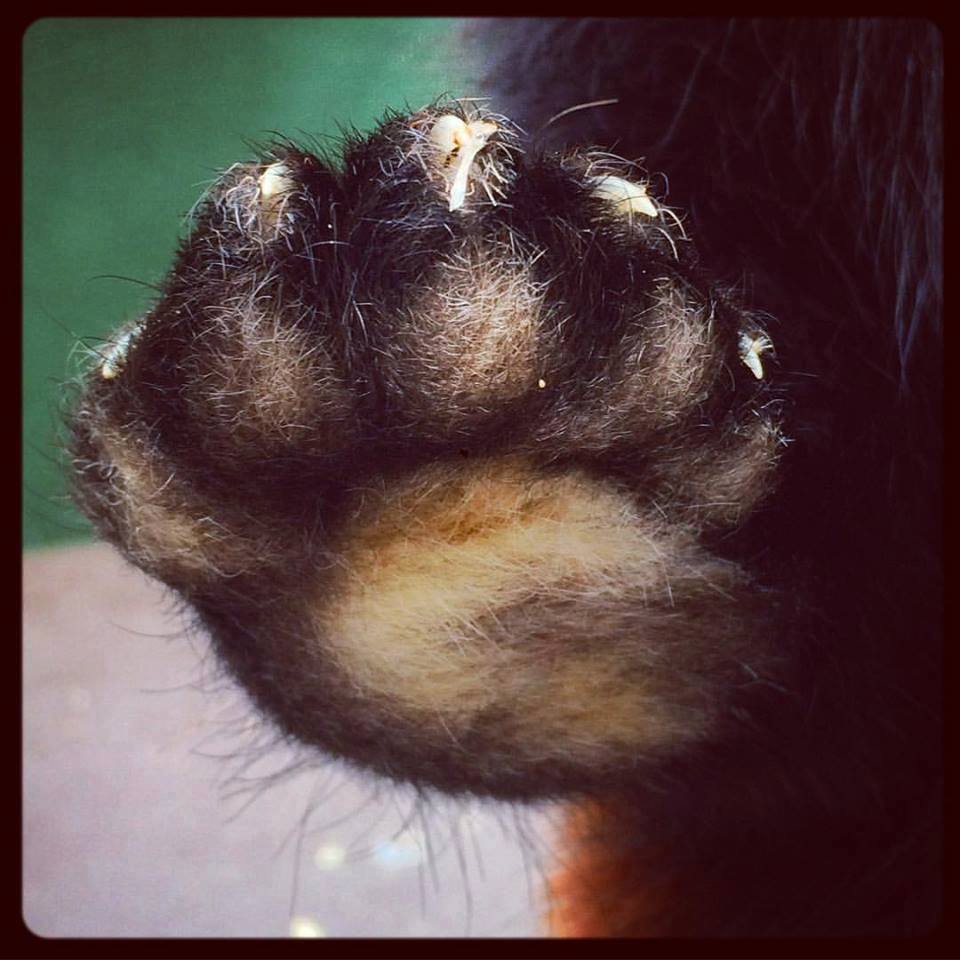
7. Did you know that the red panda has a sweet tooth? In a 2009 study in The Journal of Heredity, researchers discovered that red pandas preferred artificial sugars to plain or naturally sweetened bowls of water. That makes them the only non-primate species known to be able to taste aspartame, an ability previously thought unique to Old World monkeys, apes, and humans!
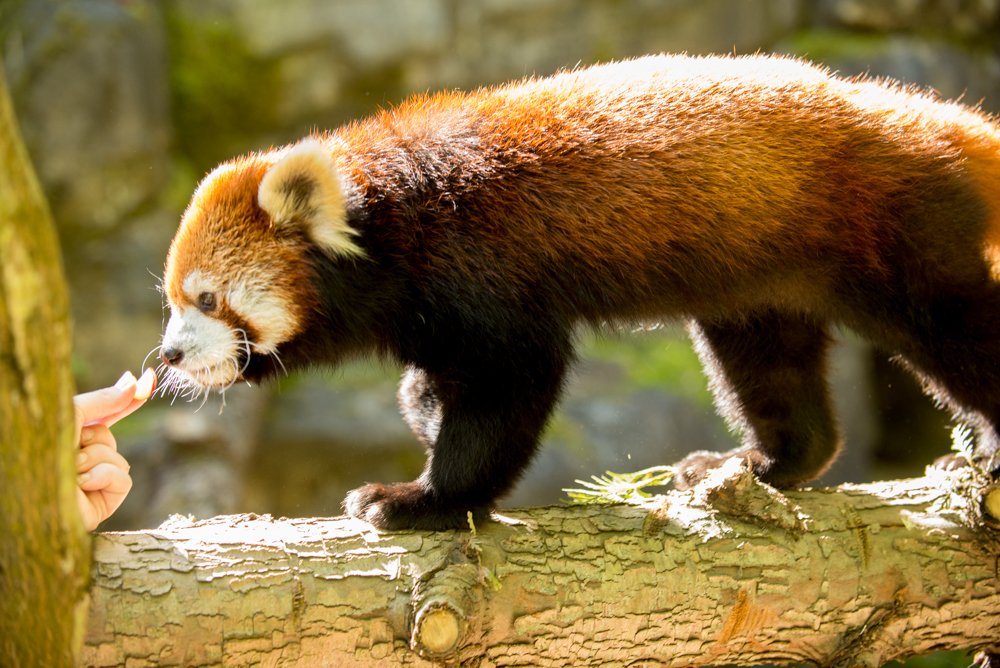
Red panda Mei Mei at Oregon Zoo.
8. Red pandas stand on their hind legs! While an upright panda may be cute, this is actually a defense mechanism as red pandas will often stand up to appear larger when provoked or threatened. They will also let out their loudest call: the huff-quack. It sounds like a big bear is in the room (while quacking) and if they are stressed or cornered they may even defend themselves with their sharp claws or release a foul smell from their scent glands on the intruder or stand on their hind legs. So if you ever see a standing panda you may want to keep your distance!

Photo from Cincinnati Zoo.
9. Red pandas also have very sharp claws and are one of the few animals that can climb straight down a tree, head-first!
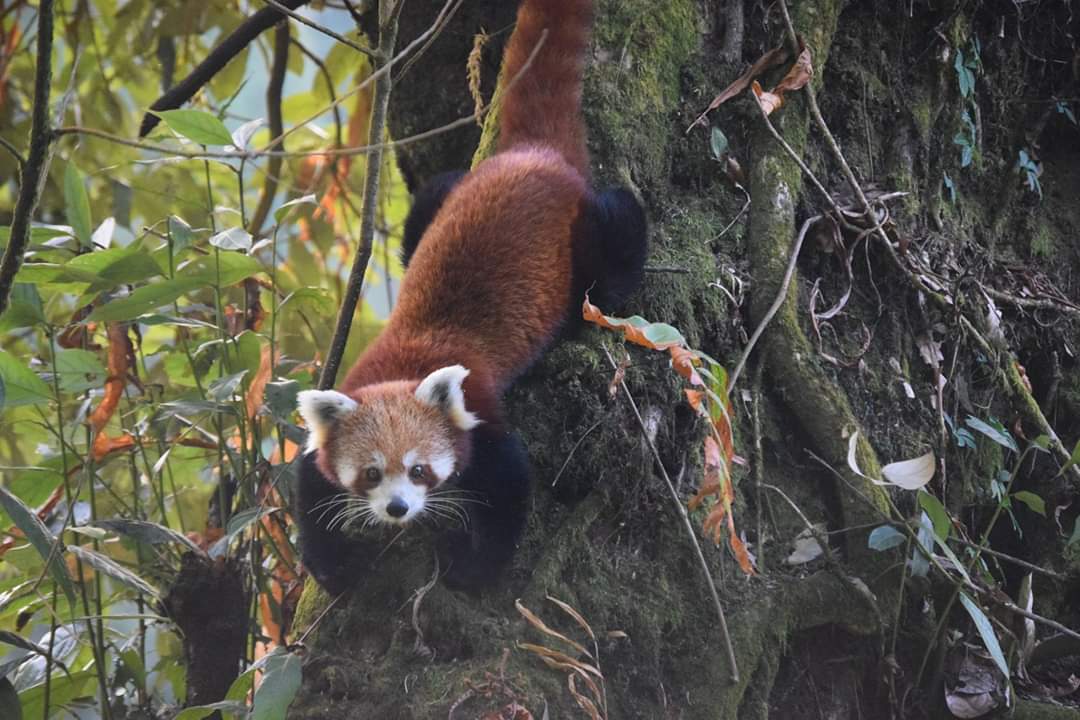
© Red Panda Network
10. "Preadaptation" is when a species or taxonomic group develops a new use for a morphological feature that they inherited from their ancestors, who at one point, benefited from the feature in other ways.
What is an example of a preadaptation in red pandas? Their thumbs! Which are actually hidden thumbs or modified wrist bones that originated in the carnivore ancestors of red pandas.
Over time, the function of this thumb evolved to be used to assist in grasping and stripping bamboo stalks. And like raccoons, they also dip their paws into water when they take a drink!
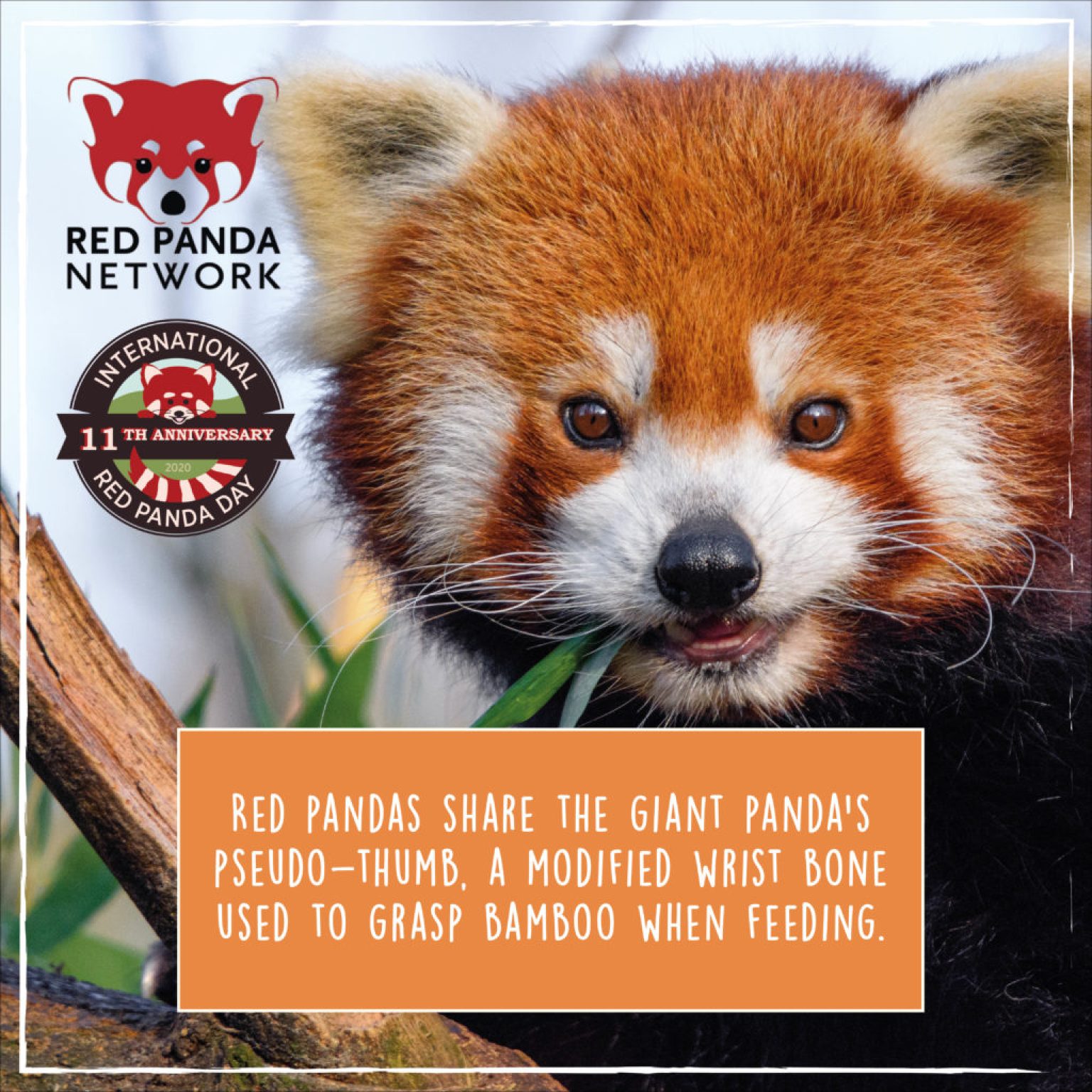
Design by Laura Finnegan. Share on social media!
11. Red pandas spend most of their time in trees (arboreal) and aren't exactly built for efficient movement on the ground. In fact, they tend to only ground themselves when it is absolutely necessary! Their front legs are short and angled inward, which causes them to have their signature waddle-walk.
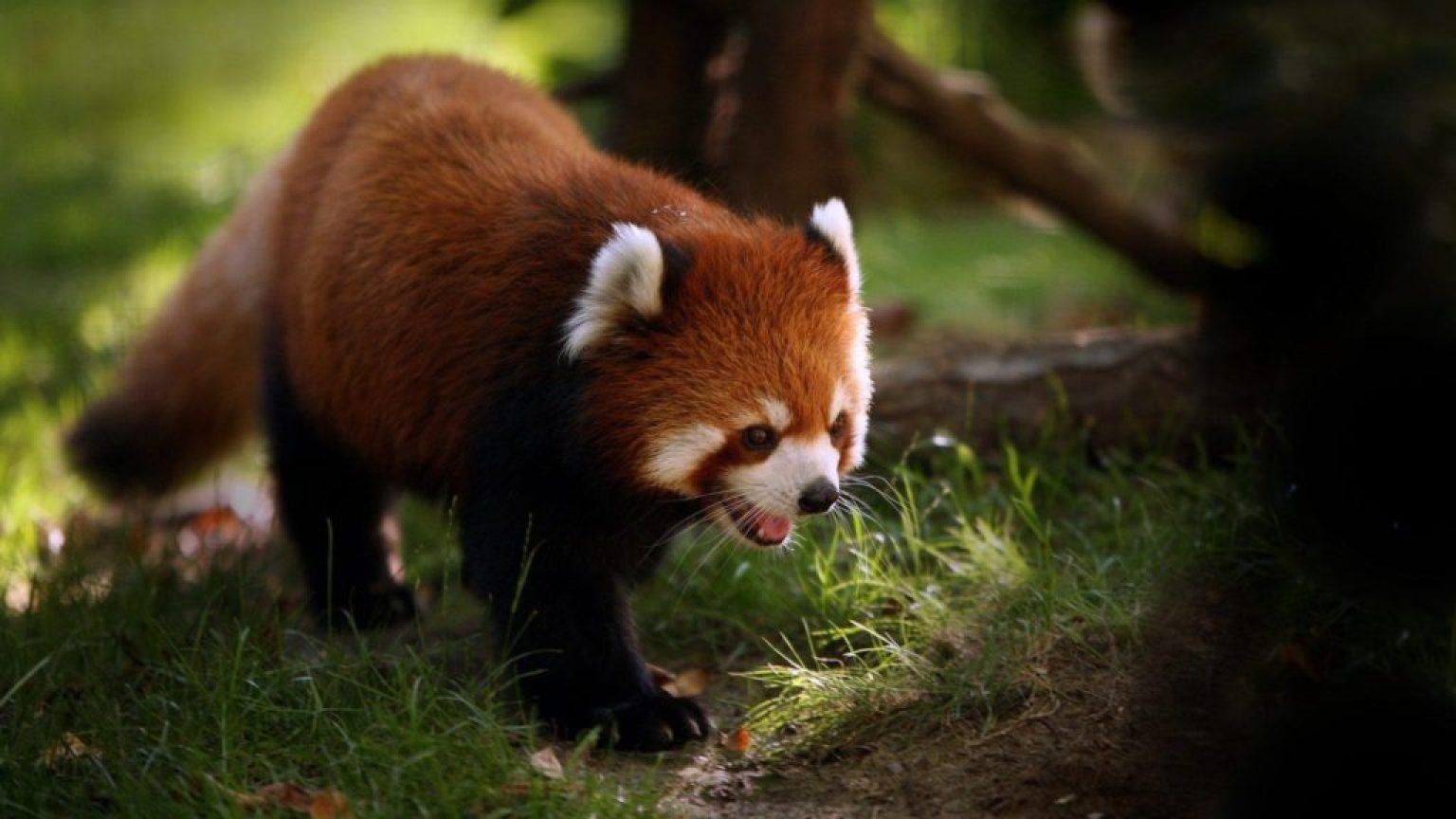
12. Red, black and white? Sometimes with hints of orange and yellow? One might not think these would be very good colors for a tree-dwelling mammal. But did you know this precise color combination helps them camouflage from their predators? They blend in great with the red moss, white lichen and yellow-orange-red foliage of their forest habitat. And their black bellies makes them difficult to see from below!
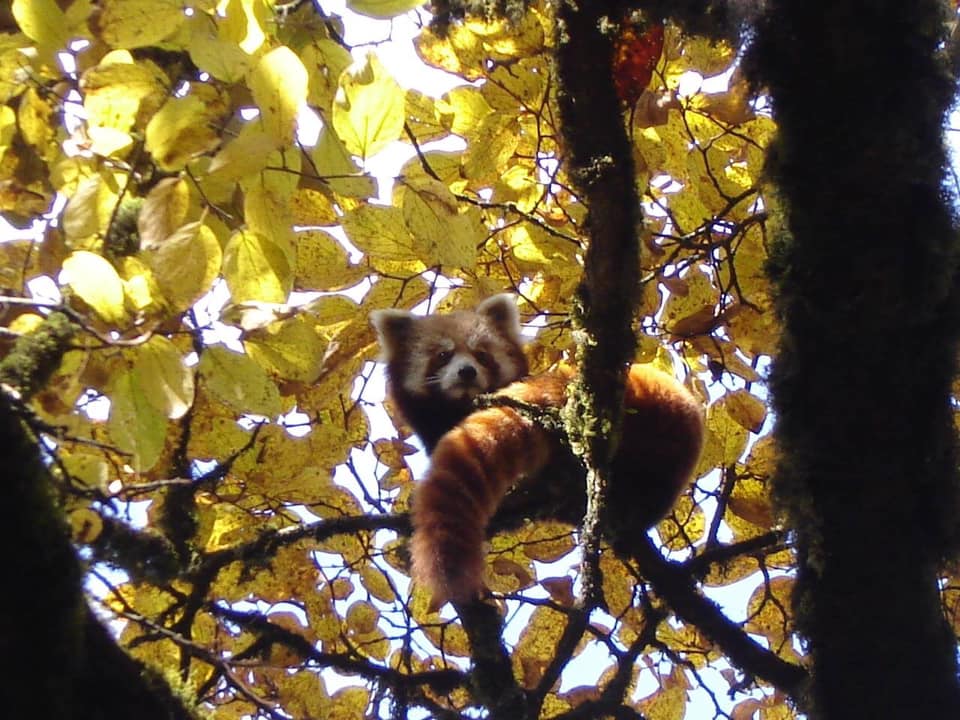 © Red Panda Network
© Red Panda Network
Help us raise awareness of International Red Panda Day 2020 — and the first-ever virtual event — by sharing your favorite fact from this article on social media or share one of our red panda fact banners by Laura Finnegan!
